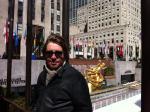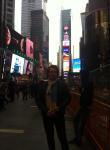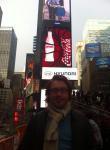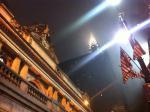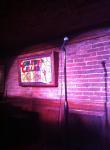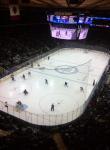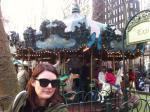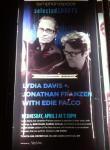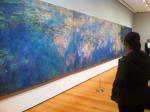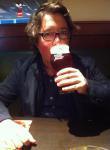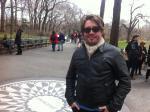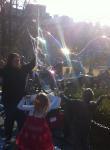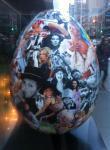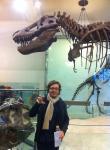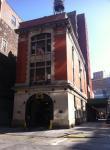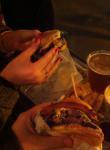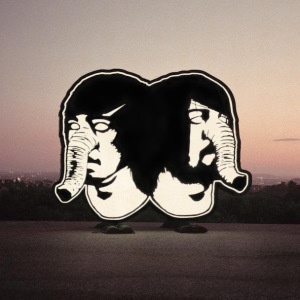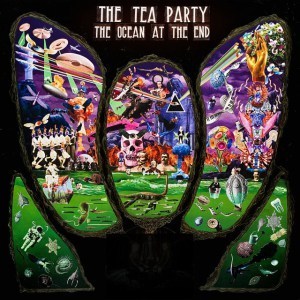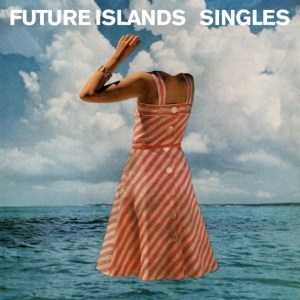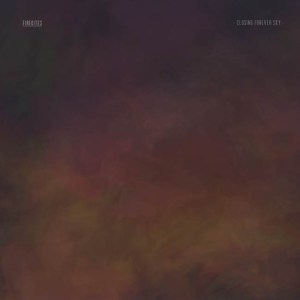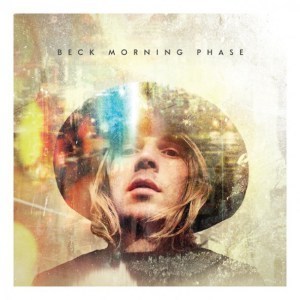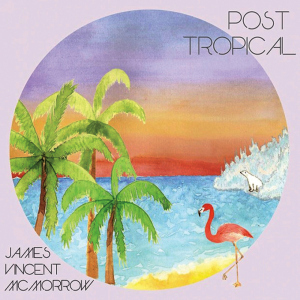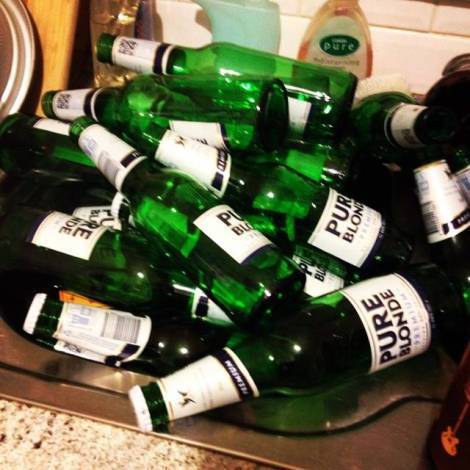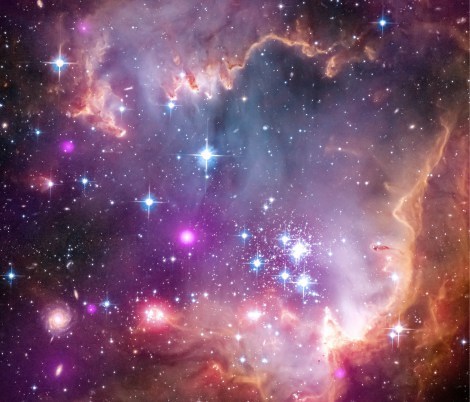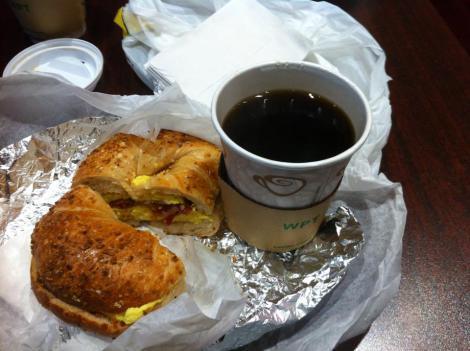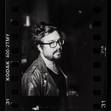Nick Milligan's Blog, page 8
September 29, 2014
Jeff Martin: interview

Jeff Martin of The Tea Party
Canada’s stadium-sized rock trio The Tea Party have returned from a decade-long hiatus with a powerful musical statement – an eighth studio record called The Ocean at the End. The title seems an appropriate metaphor. If the path back from their acrimonious break-up in 2005 was a journey of self-discovery, then that chapter is at an end. The destination is this vast musical ocean that appears on The Tea Party’s new album: pure, elemental and timeless rock music. I spoke with vocalist and guitarist JEFF MARTIN about the band’s triumphant return.
How are you finding the process of discussing The Ocean at the End with music journalists?
“With The Ocean at the End there’s a lot to digest. You know when a band knows their record inside and out, and they start the process of interviews and it’s the same answers [in every interview]? Well I’m not really at that point yet, because I’m still trying to figure it out myself.”
When The Tea Party officially ended its hiatus with 2012’s Reformation Tour, was the plan to also release a new record or did you want to wait and assess the response from fans first?
“It wasn’t about gauging the response of our fans, it was more about gauging the response from ourselves. How did we feel? There were three things that we needed to prove. One was that the band could go on stage and own it again, and be one of the great rock bands in the world. We proved that, we proved that that could happen, and [we were] even better than before we took our hiatus. The second thing was can we find the brotherly love that we once so passionately had for one another. And, without going into it, I needed to prove to Stuart [Chatwood, bassist] and Jeff [Burrows, drummer] that I was once again captain of the ship. They wanted me to prove that to them. If we were going to go into a studio, I had to be that captain. Once we were all satisfied with that, then it was like, ‘Yes, ok, if The Tea Party is going to make a record then we have to make a record that stands up to anything we’ve done in the past. That’s a big call. So the three of us decided to take our time, and not rush this. If we were going to put 11 songs on a record, then every single one of them had to be one of the greatest Tea Party songs.”
The three of us are our own worst critics, there isn’t a music journalist out there that can be more critical than we are.
I read that the band recorded the album in a Toronto studio across four different sessions over an 18-month period. Why did you break up the recording process in that way?
“It was to let the record organically take shape, then we could sit back and look at it and see how it was growing. And I really took my time with the lyrics because I wanted the words to paint those musical pictures properly and resonate with it all. The three of us are our own worst critics, there isn’t a music journalist out there that can be more critical than we are. When we say this is definitely one of the best things we’ve ever done, we mean it.”
Sonically, what did you want to achieve with this record?
“I certainly wanted to get away from where Seven Circles ended up going, and even The Interzone Mantras. [Editing software] Pro Tools and all that stuff. That is not The Tea Party. The Tea Party is done on an old Neve [mixing] desk with Fairchild compressors, everything is analogue. And a big room so I can capture that beast called Jeff Burrows. So all of my mic’ing techniques and everything I’ve learned since the inception of The Tea Party, I recollected it all. I put it all on the table, so all of my cards were dealt.”
Did you take song ideas into the studio or did you write why you were in there?
“No, we had two writing sessions. One was in Byron Bay while I was still living there. The other, which was the longer of the two, was in Windsor, our home town. Which was great because my mother was gravely ill at the time, so it was great to spend time with her. She passed away about a month ago. But it was great for us to be back where it all started, and we were writing as a band. It wasn’t me coming to the band with an idea. It was the three of us, facing each other, no gimmicks, just raw talent.”
So the atmosphere in the studio was very different to the making of 2004’s Seven Circles?
“Oh, very different. First of all, no outside influences which was necessary. And it was absolutely my fault, but back in those days the studio turned into a rock ‘n’ roll circus and it was a party all the time. Not now. We had great fun, but the work ethic was just stunning, it was great.”
When you’re writing and recording do you give any thought to how the songs will translate to the stage, or do you worry about that later?
“Well, I’ll tell you this, we tried to stay away from a lot of keyboards on this record. Because Stuart definitely wants to be playing bass a lot more. I think the only conscious thing we did was that Jeff and Stuart begged me to make this my guitar record and reclaim the territory. With the guitar solo in [title track] ‘The Ocean at the End’, I’ve got some very serious, serious musos whose opinions I rate the highest, and for them to say that is one of the greatest guitar solos ever, I’m just like, ‘Thank you.'” (laughs)
You’ve spoken in the past about the personal journey you went on during The Tea Party’s hiatus. How did that self reflection permeate the lyrics and themes on
The Ocean at the End
?
“My studies, as far as Thelemic philosophies are concerned, were reignited during the time away from the band. That has played a very big part on my personal spiritualism and on my abilities to have absolute focus at any given point. That’s probably the most important [influence] – the ‘love is the law, love under will’ factor. This is my motto and it’s what I live by.”
Water is a recurring piece of imagery in the lyrics. What does water symbolise for you?
“Esoterically speaking, water is a conduit for our emotions. What I’ve shown on this record, poetically, is quite a kaleidoscope of emotions that are being expressed. You need a conduit, I think that’s probably why. It’s definitely a subconscious thing, but hindsight being 20/20 I’m very proud of it. Lyrically speaking, with how I write lyrics, it’s almost automatic writing. It’s a very esoteric thing that occurs, sometimes I don’t really remember [writing the lyrics]. It’s an occult science in itself.”
If someone had played The Ocean at the End to you back when The Tea Party were releasing their very first album, 1991’s self-titled record, would anything have surprised you about your future sound?
“Just the depth of it, it probably would have unnerved me and frightened me. [I would have thought] ‘I don’t see how we can get there.’ But we got there.”
So the band has made massive progression since its debut?
“Oh, absolutely. With everything that I’ve learned over the years with engineering and production, I would say that as far as my skills go in that department, this is the [album] that came after Triptych, you know what I mean? There was a lot of time between Triptych and this [record], and a lot of lessons learned and a lot of wisdom accumulated. So that’s why sonically this is such a jump.”
You played and recorded with other musicians during The Tea Party’s hiatus, like The Armada and Jeff Martin 777, but what is unique about the chemistry that you share with Jeff and Stuart? How would you define that chemistry?
“It’s the years, it’s the familiarity. Christ, I’ve known Jeff since I was five years old. I’m going to be 45 this year, so that’s a long time. And Stuart almost as long, we met in the first year of high school. We just know each other inside and out. So that’s the reason why when people come to see The Tea Party, or when other bands come to see The Tea Party, they’re shaking their heads going ‘How is this happening?'”
So things are going to change ‘dramastically’. Do you like that word? I made it up.
Does Australia remain the band’s biggest fan base outside of Canada?
For the time being, yeah. But we are going to South America so that could change quite quickly (laughs). Back in those days we tended to concentrate on Canada, Australia and Europe. But now the world is calling, like South America and Asia. So things are going to change ‘dramastically’. Do you like that word? I made it up. It’s drama and drastic.”
Is America still a mountain you want to surmount?
[huffs] “I don’t. They [the band] do. To tell you the truth, I would be happy just doing LA, New York, Detroit, Chicago, Austin… just cosmopolitan centres? Yes. But don’t even think I’m going to get on a tour bus and play Boise, Idaho and Alabama. It’s just not going to happen.”
You’ve been writing and recording with Sarah McLeod of The Superjesus. Will it be a full-length record?
“Yes it will, it will come out next year. It’s actually myself, Sarah and Mick Skelton, the drummer from The Baby Animals. I was just playing it for Jo [Corbett], my publicist and I played her three songs and after every song she just turned around and said, ‘Your fans are not going to see this coming.’ It’s a head-turner.”
Are there any other projects you’re working on?
“I did the soundtrack for the art exhibition called Windows to the Sacred, which was the works of Aleister Crowley and James Gleeson, artists of that ilk. So I did a surround-sound soundtrack [The Nightmare Paintings], so when that art exhibition tours around the world that’s playing. So that’s getting released on my label I’ve just formed called 93 Records. So that’s another avenue I’m very interested in, the avant garde art music side of things, the soundscapes. It’s a different world for me, I love it. And my business manager Robert Buratti is pretty much the leading art dealer as far as works of the esoteric go. My place in Perth is his gallery, so when I’m home I’m surrounded by priceless pieces of art. I can’t ask for more. It’s the ultimate rock star lair, it doesn’t get better.”
The Ocean at the End is out now through Sony.


September 28, 2014
Iva Davies: interview
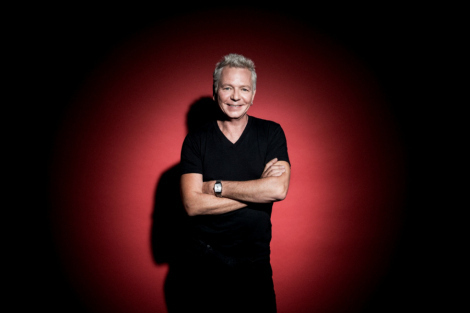
Iva Davies of Icehouse.
It was the combination of a plane trip over the Australian desert and a cliched advertising campaign that led singer Iva Davies to write one of our country’s most iconic songs. Released 23 years ago as the opening track on Icehouse’s second record,Primitive Man, the song Great Southern Land endures as a sonic encapsulation of Australia’s ancient spirit.
“I can remember fairly clearly the process of writing [Great Southern Land], which is unusual for me,” Davies says. “With the vast majority of my catalogue I have no particular memories attached to the process. [Icehouse was] coming back to Australia from our first international tour and during that time two things happened. One was that I experienced my first plane flight over Australia and there was a light bulb moment where I suddenly recognised how enormous the place was – and how ancient too. The landscape that I was looking at out of the plane window was quite extraordinary. It was screaming at me that it had been there for so long in order to evolve to its physical state.”
When Davies landed in Australia he was confronted with building patriotism as Brisbane’s 1982 Commonwealth Games approached. But he felt the event’s advertising campaign was missing the point.
“I got very homesick on that [overseas] tour and when I came back to Australia there was a strange mood going on here,” Davies recalls. “We were heading towards a Commonwealth Games and there was a lot of advertising on television that was in the form of the postcard version of Australia. There was a lot of cliches and that annoyed me. I guess I was kicked in the guts by it, having been off on my first international experience, to have Australia summarised in all those cliched terms – the koala bears and the beaches and surfing. I felt a need to write a song that captured the soul of a place that had been around for millennia, before human inhabitation.”
When it was time to write a follow-up record to their debut album Icehouse – which was released when the group was called Flowers – Davies decided to write a song about Australia that avoided cliche.
“I remember thinking to myself: ‘Are you really going to do something as dangerous as is this? Because if you get it wrong it will be a huge embarrassment,’” the singer remembers. “So I took it incredibly serious. But, having said that, it was just the first of ten songs that I was obliged to write for the follow-up album [1982’s Primitive Man].”
For those familiar with the stark, haunting beauty of Great Southern Land, it will come as no surprise that the song received an overwhelming response from Icehouse’s label Chrysalis.
“I remember delivering the demos to the managers and the record company – and the reaction to that song was absolutely gobsmacking,” Davies says. “To me, it was just another song in a collection I was due to write, but the way they reacted was: ‘this is something incredibly special.’ I never really understood it and I still don’t – it’s extraordinary.”
Great Southern Land is just one of many enduring Icehouse hits – along with Electric Blue and Touch The Fire – that have ensured a new generation of fans.
Following the release of Icehouse’s 1993 studio album Big Wheel, Davies discontinued the group and worked on an array of musical projects under his own name. Director Peter Weir invited Davies to compose the score for his 2003 high seas epic Master and Commander, which starred Russell Crowe. But the release of a two-disc greatest hits compilation in 2011 called White Heat, which achieved Gold sales in one week, and the 30th anniversary of their debut record, saw the singer reform Icehouse and return to the live circuit.
Davies admits that he didn’t have high expectations of the public’s response.
“I guess it would be fair to say that right from the very beginning [of our career] I’ve been a cynic, to some degree,” he admits. “I remember receiving the first royalty cheque from the Flowers album – which was a huge success but only after three years of very solid work and back-breaking – and saying to our management’s accountant ‘can you invest this for me? Because I know I’ll never see any more money out of this business.’ That was way back in 1980. So I didn’t really have any expectations at all [for our return] and I couldn’t convince myself that there would be any more interest in the band.”
Most surprising for Davies was the appearance of a new generation of fans. Icehouse played to a large – and young – crowd at 2011’s Homebake festival.
“I was anxious about that show,” Davies remembers. “And I was warned prior to Homebake that it was a festival predominantly for 20-year-olds. I thought, ‘Oh god, they’re going to have no idea who these middle-aged guys are. Our bass player, Steve Bull, nudged me in the middle of the show and said ‘check out how many of the 18-year-olds are singing all the lyrics’. It was extraordinary because the people in the audience were the age of my children.”
Icehouse’s triumphant return included an Australian support tour with pop duo Hall and Oates in February of 2012. One half of the duo, John Oates, co-wrote the Icehouse hit Electric Blue, and the songwriter joined the group on stage to perform the song during their tour dates.
“[Oates] had joined us once before and that was when [Icehouse] were on tour in America – about 1988 or ‘89 – and we were playing at [New York’s] Madison Square Garden. He joined us [on stage] for that song and in fact I have a photograph of that particular moment up in my kitchen. It was one of the great ‘light bulb’ moments for me because not only was John Oates on stage with me, but we were playing Madison Square Garden.”
An obvious question, now that Icehouse are back as a live force, is whether fans can expect to hear new material from the group. Around 2001 Davies was working on material for a new Icehouse album called Bi-Polar Poems, but the singer says he has creatively moved on from that collection of work. In various stages of completion, the songs from Bi-Polar Poems may be made available for fans in the future, but will not be a commercial release.
But the good news is that new material might be on the way.
“I’m in the process of having a whole new system installed in my studio – and I haven’t upgraded anything since about 2006,” Davies explains. “So this is quite a big deal for me to have a new Pro Tools system and some new toys to play with. The signature of how I’ve worked in the past is to get some new toys and to see what happens.”
In the meantime, Icehouse fans can indulge in the band’s “DubHOUSE” project which is a reimagining of their classic songs in a reggae style. A conversation in which Davies recalled to a friend how he had watched the legendary Peter Tosh from side of stage at a European festival in the 1980s, led to the idea of reinventing Icehouse into an eight-piece dub reggae group. As DubHOUSE, the band performed a special show in Sydney and Melbourne, which were recorded for a new live album.
“We were able to reinvent a couple of songs that we haven’t played for a while – most notably Street Cafe and No Promises,” Davies explains. “I’d say there’s a strong possibility that those [dub versions] might appear in our classic set. It was great fun and really reinvigorated the band – the process [of converting the tracks] was surprisingly successful.”


September 7, 2014
Dungog Festival film reviews

James Theatre, Dungog. Picture by NICK MILLIGAN
DUNGOG FESTIVAL
Last weekend I ventured back to sleepy Dungog for the inaugural Dungog Festival. Similar events have been held in the rural town in previous years, like the Dungog Film Festival. It’s a great idea and the town certainly has enough venues to facilitate a range of interesting events. There was some great music on offer too, from Tim Rogers to Husky, Meg Mac and Paper Kites. Sadly, each music event attracted a large number of locals who seemed content just to drink and chat during the bands. That was a shame. But the movie program was superb. The James Theatre is a really beautiful venue and between there and the local RSL, there were many feature films, documentaries and shorts to view.
I checked out the following three movies. Here’s my reviews:
WHAT WE DO IN THE SHADOWS
Directed by Taika Waititi and Jermaine Clement
4/5
 On Friday night was the Australian premier of the hilarious new comedy from Eagle Vs Shark and Boy director Taika Waititi and Flight of the Conchords star Jermaine Clement. The mockumentary What We Do In The Shadows sees a camera crew follow the exploits of three childish yet fiercely debonair vampires who live in a Wellington share flat. There’s 862-year-old Vladislav (Clement) who enjoys sexual deviancy and torture. Then there’s the polite, motherly vampire 379-year-old Viago (Waititi) and 183-year-old slobbish vamp Deacon (Jonathan Brugh). The fourth house mate, the 8000-year-old Peter, lives in the basement and is a creepy, Nosferatu-style vamp. They are soon joined by a freshly created vampire, Nick, whose generational angst soon causes friction in the household.
On Friday night was the Australian premier of the hilarious new comedy from Eagle Vs Shark and Boy director Taika Waititi and Flight of the Conchords star Jermaine Clement. The mockumentary What We Do In The Shadows sees a camera crew follow the exploits of three childish yet fiercely debonair vampires who live in a Wellington share flat. There’s 862-year-old Vladislav (Clement) who enjoys sexual deviancy and torture. Then there’s the polite, motherly vampire 379-year-old Viago (Waititi) and 183-year-old slobbish vamp Deacon (Jonathan Brugh). The fourth house mate, the 8000-year-old Peter, lives in the basement and is a creepy, Nosferatu-style vamp. They are soon joined by a freshly created vampire, Nick, whose generational angst soon causes friction in the household.
As the vampires prepare for the legendary annual inhuman event The Unholy Masquerade, which sees all sorts of creatures converge for a night hedonistic frivolity, we slowly learn the back stories of our vampire protagonists and meet a pack of werewolves, led by Rhys Darby.
What We Do In The Shadows is built around the deadpan humour that Clement executes so superbly with Bret McKenzie in Conchords. When Nick’s character introduces anachronisms into their gothic pad, like the internet, the writers find endless material for gags (when Vladislav does his “dark bidding” online it’s actually on eBay). Viago’s desire to keep an orderly household includes suggestions to put newspaper on the furniture and floor before his flatmates bite their victims, and to maintain chores like washing the dishes. These ideas are met with scorn. Scenes in which the characters try to convince security guards to “invite them in” to nightclubs, in accordance with vampire legend, are also laugh-out-loud funny.
The special effects and gore are also well-considered and perfectly timed, with the audience in hysterical fits of laughter when Viago accidentally bites into a victim’s main artery and paints the room red. Transformations into bats also reap some great comic moments.
In a time when vampires are, dare I say it, being “done to death” in mainstream cinema, What We Do In The Shadows has enough laughs to make it fresh and very re-watchable. It is a low-budget comedy that is worth sinking your teeth into.
BURT’S BUZZ
Directed by Jody Shapiro
3/5
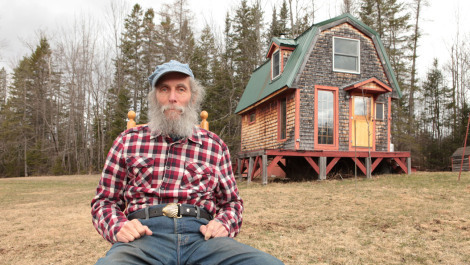 Finally making its way to Australia is Burt’s Buzz, the Jody Shapiro-directed documentary about Burt’s Bees icon Burt Shavitz. The film explores the eccentric 76-year-old beekeeper who co-founded the world-famous honey-based balm and cosmetics brand, and how his role has changed in the multi-billion dollar company.
Finally making its way to Australia is Burt’s Buzz, the Jody Shapiro-directed documentary about Burt’s Bees icon Burt Shavitz. The film explores the eccentric 76-year-old beekeeper who co-founded the world-famous honey-based balm and cosmetics brand, and how his role has changed in the multi-billion dollar company.
The documentary could have been shortened by about 10 minutes, and often labours its points, but Shavitz, a man of very simple pleasures, is certainly a fascinating subject. He is a private, eccentric individual who lives without electricity and hot water in a small shack in Maine. His best friend is a golden retriever. Shapiro does her best to find out what’s going on inside the mind of the bearded Shavitz – what’s ticking behind those sad eyes? – but with mixed success. Burt remains a mystery.
But, luckily, there is an interesting story here. As a young man Shavitz moved to New York and documented ’60s counter-culture as a photographer for both Life and Time magazines. In 1970 he moved to the country side and learned the art of beekeeping. He sold honey by the side of the road and became a recognisable figure around town. Shavitz then met single mother of two Roxanne Quimby, with whom he would form boutique honey products company Burt’s Bees. With Quimby’s massive ambition as its driving force, the brand grew into the world-wide multi-billion dollar company that it is today.
Shapiro explores the fallout of Shavitz and Quimby’s separation (the latter does not take part in the movie, but is represented by her son Lucas St. Clair). We learn that Shavitz was manipulated out of the company before the business grew into the mountainous wax pile it is today. Now Burt is wheeled out by the company and paid to be a marketing tool, maintaining the public’s perception that Burt of Burt’s Bees is a real person – a country bumpkin who created an international brand. We follow him on a visit to Taiwan where he is greeted by hordes of screaming fans and treated like a rock star. He is a long way from his Maine meadow. Shavitz is a fish out of water and a man with a life that’s certainly worthy of a documentary.
The dichotomy of Shavitz’s values, of how we need to appreciate the simple things in life, seems so at odds with his decision to keep promoting a conglomerate cosmetics brand. Shapiro struggles to dissect this contrasting ideology but does a fine job of documenting it.
20,000 DAYS ON EARTH
Directed by Iain Forsyth and Jane Pollard
4/5
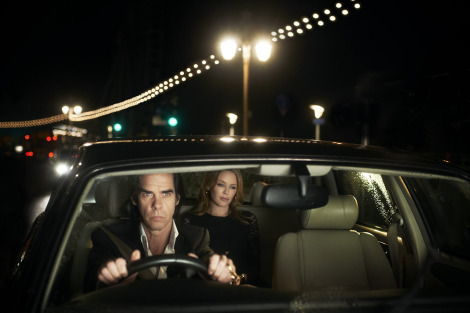 A popular film on Dungog Festival’s Sunday program was 20,000 Days on Earth, a pseudo-documentary about a day in the life of writer and musician Nick Cave. It is an atmospheric hybrid of fact and fiction, as the audience gets to be a fly on the wall of a constructed, fictional day in Cave’s career. We follow him as he visits a shrink, has lunch with collaborator Warren Ellis, works on the Bad Seeds’ record Push The Sky Away and visits a British national archive to discuss personal artefacts housed there. He attempts to explain his motivations and creative processes. But will we get to find out what really drives this influential man?
A popular film on Dungog Festival’s Sunday program was 20,000 Days on Earth, a pseudo-documentary about a day in the life of writer and musician Nick Cave. It is an atmospheric hybrid of fact and fiction, as the audience gets to be a fly on the wall of a constructed, fictional day in Cave’s career. We follow him as he visits a shrink, has lunch with collaborator Warren Ellis, works on the Bad Seeds’ record Push The Sky Away and visits a British national archive to discuss personal artefacts housed there. He attempts to explain his motivations and creative processes. But will we get to find out what really drives this influential man?
Cave co-wrote the screenplay with his two directors and delivers voiceovers that are written in his direct style of deftly illustrative prose. It’s a documentary that is atmospheric and abstract, a framework that certainly suits the fascinating man at its centre. But hardcore fans of Cave’s work will not learn anything new about him. True insights are really hard to find. Even as Ray Winstone, Kylie Minogue and Blixa Bargeld appear for brief conversations and then disappear, as if they are figments of Cave’s subconscious, you get morsels of revelation. But not much more.
The most sincere, revelatory moments are those in which Cave is talking to famed psychoanalyst Darian Leader about his childhood. There are also anecdotes delivered in the darkened basement of the British national archives in which the songwriter looks at old photographs from his days with The Birthday Party. Wonderful, too, is the live performance footage towards the film’s climax in which Cave intimately sings to girls in the front row, who appear to hastily melt beneath their skirts.
20,000 Days on Earth is a must-see for his fans, and will perhaps be an eye-opener for casual listeners, but is best as a cinematic companion to both his novel and song catalogue. Cave is captured in prosaic shards of stunning cinematography and glimmers of introspection. It leaves you wanting more and has a mesmeric quality. But you never feel like Cave is anywhere but the driver’s seat, steering you through bends he has chosen.


September 1, 2014
Top 10 favourite Australian songs
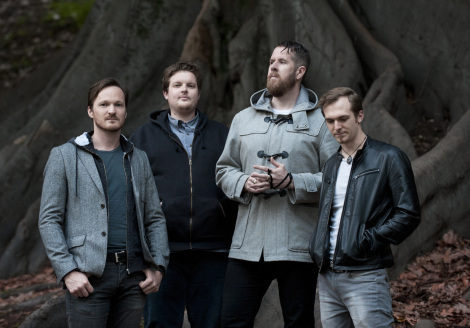
TOWERING SONGWRITERS: The Siren Tower are a band that you simply must listen to.
Making an arbitrary list is like creating a mix tape, only more narcissistic and time-consuming. But compiling my top 10 favourite Australian songs has proved a pleasant distraction and an excuse to go back and revisit the work of brilliant home-grown artists. Tough decisions have been made. But here they are, in no particular order, my 10 favourite Aussie tunes:
01. ‘I AM THE SUPERCARGO’
by The Drones
This monstrous rock song from Havilah is just one of many examples that confirm singer-songwriter Gareth Liddiard’s colossal genius. This album also saw guitarist Dan Luscombe join the Drones in the recording studio for the first time. His and Luscombe’s duelling guitars form a tsunami that rises and crashes throughout ‘I Am The Supercargo’. Lyrically the song explores the “cargo cults” of Papua New Guinea, and how primitive tribes were exposed to commercial cargo routes. It’s about how modern technologies seemed God-like to a native people. Battles in World War II were fought in front of Melanesian islanders and greatly changed that people’s outlook. Liddiard also references John Frum (Google him) in his lyrics. The songwriter is a keen reader and his perspective on history is always poetic and unique. But, musically, ‘I Am The Supercargo’ is a soaring, dynamic and cinematic rock song. It also contains lyrical gems like: “You want to make good with a cannibal? You’ve got to show him how to freeze a priest.”
02. ‘EVERYTHING’S TURNING TO WHITE’
by Paul Kelly
For a die-hard Paul Kelly fan, choosing his most powerful song is a dilemma comparable to that faced by Meryl Streep in the film Sophie’s Choice. While the Nazis don’t have any known designs on Kelly’s music, picking a track from his monumental back catalogue is no simple task. But I’ve chosen ‘Everything’s Turning To White’. There’s a common misconception that the song is about a real life news story that Kelly read, but it is in fact based on the short story So Much Water So Close To Home by the great American writer Raymond Carver (which was also adapted into the Australian movie Jindabyne). This song introduced me to the late master of the short story, so I have Kelly to thank for the discovery. So while the disturbing nature of the song, and the horrible scenario that its protagonist finds herself in, can be attributed to Carver, Kelly’s distillation of the story’s concept and emotions is of equal genius.
03. ‘I SHOULD HAVE SEEN THIS COMING’
by Big Heavy Stuff
Sometimes you hear a record and think to yourself, “Why the fuck isn’t this band the biggest act on the planet?” When I first heard Big Heavy Stuff’s 2004 record Dear Friends and Enemies, I played it non-stop for six months. It was to be their final record and for some reason did not make them international superstars. The album doesn’t even have a page on fucking Wikipedia! It might have something to do with the fact that the record’s two singles ‘Mutiny’ and ‘Homesick’ are perhaps the album’s least interesting, but that is only by the smallest or margins. The record is brilliant from start to finish. The melodies are lush and encompassing. Nick Kennedy’s drumming is kinetic. Greg Atkinson’s voice is fragile and pure. ‘I Should Have Seen This Coming’ borrows a Led Zeppelin drum rhythm and has beautiful, winding guitar parts. The song shifts gears towards the finale and Atkinson’s voice crescendos as he asks: “What’s one less? No one will notice.” There’s heavy emotion in every line.
04. ‘SOMETHING BETWEEN US’
by Skunkhour
From their flawless final record, 2001’s The Go, is this slow-burning sexual number. It’s possibly the most sensual tune ever released by an Australian act and highlights what a stunning voice Aya Larkin possesses. At his most aching, the smooth vocalist’s falsetto floats through each verse before the release of each chorus. The production can’t be faulted. If you’re attempting to seduce an object of lust, you could do a lot worse than putting on this song to get the juices flowing. Thank me later.
05. ‘GREAT SOUTHERN LAND’
by Icehouse
Through weird, discordant synth notes and echoed production, Iva Davies managed to distill the vast ancient continent of Australia into the haunting pop song ‘Great Southern Land’. The Icehouse frontman was moved to do so after flying home from an overseas tour and gazing down across the seemingly endless expanse of the central Australia desert. When he arrived home, his television was playing cheap, cliche-riddled advertisements for the 1982 Commonwealth Games in Brisbane. Davies felt his home nation was being misrepresented. He was right. And thank Christ he did something about it.
06. ‘LIFE OF CRIME’
by The Triffids
Discerning music listeners know that 1986’s Born Sandy Devotional is one of the greatest Australian records of all time. Track seven, ‘Life of Crime’, has some of singer-songwriter David McComb’s most clever and vivid imagery. The slinking arrangement, and Gil Norton’s shimmering production exudes heat. You can see the sun burning through every note. Born Sandy Devotional is one of McComb’s most confessional and explores “the idea of fidelity as a complete all-consuming faith”. The album – and this truly brilliant song – is a masterpiece.
07. ‘STAGGER LEE’
by Nick Cave and The Bad Seeds
Released on the aptly titled record Murder Ballads, this is Cave’s depraved and uber-violent re-imagining of the classic American folk-song character Stagger Lee. The original song is about African American pimp and murderer Lee ‘Stag’ Shelton who lived in St. Louis Missouri in the late 1800s. I can still remember being genuinely disturbed when I first heard this song as nine-year-old. Though the omnipotent narrator, Cave embodies Stagger Lee’s malevolence. The song charts the depraved lunatic’s travels, which include the indiscriminate murder of a bartender. He later forces a man to fellate him at gunpoint before executing him. It is Cave at his most nasty. Anyone who has seen the singer and his The Bad Seeds perform ‘Stagger Lee’ live are aware of its enveloping storm cloud of sizzling energy. It’s a master class in grim atmosphere. But not for the faint-hearted.
08. ‘THE PLAY YOU’RE STAGING’
by The Pictures
When Davey Lane isn’t generating big riffs with You Am I or releasing solo work, he makes music with The Pictures. They are an incredibly under-rated rock band and a live tour de force. Lane is also an accomplished vocalist and the epic track ‘The Play You’re Staging’ with its massive jams and powerful chorus is one of the best Aussie rock songs ever. Disappointingly, it does not get the attention it deserves. From 2005’s Pieces of Eight, the track is a showcase for Lane’s powerful guitar chops and equally robust vocal prowess. It’s a dynamite song.
09. ‘NIGHT MUST FALL’
by Hoodoo Gurus
Dave Faulkner’s rumination on death is a simple, yet haunting rock ballad. The closing track on the Gurus’ 1996 album Blue Cave, the song opens with Faulkner’s voice and acoustic guitar, wrestling with the unexpected loss of some close friends (“Never thought we’d ever end, I can’t afford to lose more friends”). He soon coos in a falsetto: “I’m so lonely, I’m so sorry.” It’s a slow-building track, which is one of the most formidable structures in the Hoodoo Gurus’ rock arsenal (‘1000 Miles Away’ etc). Brad Shepherd’s electric guitar seems to open the back door for the whole band to creep in and take up their instruments. Then the Gurus are again firing on all four cylinders. But ‘Night Must Fall’ remains in Faulkner’s control and his melancholy restrains the song and maintains its beauty. It was undoubtedly the singer’s best ballad until the release of ‘Evening Shade’ on their 2010 album Purity of Essence, which very nearly made this list. ‘Night Must Fall’ returns to a grief-stricken slow-burn as the track fades out. Eighteen years after its release the song still feels fresh and packs an emotional punch.
10. ‘THE ROAD’
by The Siren Tower
The Siren who? The Siren Tower. Why these guys aren’t the biggest band in the country is beyond me. The Western Australian folk-rockers released a sonically diverse and emotionally charged album, A History of Houses, in 2012. ‘The Road’ is on the record and blows my mind every time I hear it. Taking a leaf from the Paul Kelly book of direct, narrative songwriting, the track is sung from the perspective of a father who is begging his daughter not to repeat his life’s great mistakes. Superbly crafted, ‘The Road’ announces Grant McCulloch as one of Australia’s most engaging vocalists and a deft lyricist. He fills every note with a desperate plea – and he is believable. But the whole package, including the instrumentation and production, is a soaring, devastating whirlwind of angst that sweeps you off your feet and punches you in the gut. An instant Australian classic.


August 17, 2014
Top 10 albums of 2014 … so far

GRAND ENTRANCE: Steve Smyth’s Exits is one of the best records of the year.
I know, I know, the year is far from over. But in these crazy, high-octane times when information moves so fast that it can leave you with motion sickness, it is worth taking stock and listening to some of the best records to be released this year. Don’t wait and attempt to catch up when New Year’s Eve clocks on. Get with the program. Now.
The Physical World
Ten years after releasing their only full-length studio record, Sebastien Grainger and Jesse F. Keeler have reappeared with a fresh, uber-catchy and raw garage-rock barrage. These are 11 tracks of high-energy, punked up, balls-to-the-wall dancefloor stompers. Shortly after the Canadian duo’s lauded 2004 debut album, electro-rockers CSS penned a track called ‘Let’s Make Love and Listen To Death From Above’. It seems that, once again, it’s time to get down and dirty.
Futurology
After last year’s mature acoustic opus Rewind The Film, Manic Street Preachers return with their trademark intellectual pomposity, robust musical innovations, unpredictable melodies and playful glam. With strong krautrock influences, Futurology is a mixed bag of sounds that demands repeated listens. Twelve albums into their career, the Welsh three-piece still defy categorisation and push sonic boundaries.
Alias
After the sweet pop-rock of their self-titled and criminally catchy debut record, The Magic Numbers started exploring darker moods and more expansive arrangements. With some sublime female vocal harmonies at their disposal and singer Romeo Stodart’s sturdy guitar chops, The Magic Numbers’ songwriting has potent elements. Fourth record Alias, opens with six-minute haunting epic ‘Wake Up’ before continuing to make some bold musical statements. Then The Magic Numbers really surprise when the strings of smooth disco anthem ‘E.N.D.’ appear. By the finale of the album you will have fallen in love with them all over again.
The Ocean at the End
After 10 years away, it would have been foolish to think Canada’s mystic prog-rockers The Tea Party would return with anything less than a bold, stadium-sized record. The Ocean at the End saw the band end their hiatus, bury the hatchet and lock themselves away for 18 months until they had an album worthy of their monstrous back catalogue. The Ocean at the End contains Jeff Martin’s spiritual lyrics and deep, melodramatic vocals, Burrows’ Bonham-esque drumming and Stuart Chatwood’s thundering bass. Welcome back, lads.
Singles
It takes serious balls to call your new record Singles. Is every track a potential single? Probably. But as radiant as this synth-pop album is, Future Islands are best experienced on stage. Singer Samuel Herring dresses like a Bible salesman, sings like Bobby Womack and gesticulates like a firebrand preacher. And while Singles is an adequate document of their sound, capturing the soulful quality of Herring’s voice, it has spacious, shimmering ’80s production that could add a dash of sex to any social gathering. Singles is surely the soundtrack of the coming summer.
Closing Forever Sky
On their 2009 debut record, The Bowery, Firekites gave us a sweet, wistful indie-folk record. With crisp acoustic guitar parts that playfully intertwined amid organic percussion and Tim McPhee and Jane Tyrrell’s vocals, the album captured fond suburban memories and small moments of significance. It was music best played at either sunrise or sunset. It was radiant. Closing Forever Sky is Firekites music that breathes best at night, deconstructing the pristine qualities of The Bowery and rebuilding them into a darker, more spacious and atmospheric layer cake. It’s as if the dream-like opening textures of Sonic Youth’s ‘Candle’ have been expanded into a full-length musical study. The result is something beautiful, hypnotic and meditative. Closing Forever Sky is likely to be in many Top 10 lists of 2014.
Morning Phase
When Beck releases a new record, most music purists rightfully stop to sit down and absorb it. Morning Phase rewarded those listeners, with the consistently fascinating songwriter delivering a stunning dream-folk opus that returns to the sensibilities of 2002’s Sea Change. But, dare I say it, Morning Phase is even more wondrous. Using much of the same band as Sea Change, including both drummer Joey Waronker and his composer father David Campbell, Beck’s latest musical sojourn is essential listening.
Exits
Ironically, it feels like Exits might in fact be Steve Smyth’s grand entrance. He has one of the music world’s most impressive beards, but from it rolls one of music’s most unique and mesmeric voices. Anyone that has had the chance to see Smyth wail out a note-perfect, unaccompanied Sam Cooke number on stage knows that this guy is not just a musician, but a conduit that brings music into a spiritual realm. Exits shows off his vocal range, from the almost unsettling gravelled Tom Waits growl to the soaring, piercing Jeff Buckley-esque notes. His music fuses gypsy-folk with rock and everything in between, he pens incisive lyrics and his songwriting is beyond compare. Music nerds take note: this record also features Joey Waronker on the skins.
Lost In The Dream
It’s safe to assume that Lost In The Dream will feature large in most Top 10 lists this year. So it should. The third album from the Philadelphia quartet, led by mastermind Adam Granduciel, and counting Kurt Vile amongst its former members, is indeed an echoed, dreamy folk-rock album. It is a lush, layered excursion that straddles the influences of both Americana and some of Montreal’s grandiose indie-pop acts. It’s as if Kevin Shields collaborated and produced an Arcade Fire album. Though diverse in mood, from upbeat tracks like ‘Red Eyes’ to chiming slow-burners like ‘Suffering’, Lost In The Dream is cohesive and consistent, placing you in a trance from which you never want to wake.
Post Tropical
From the first notes of opener ‘Cavalier’, it’s apparent that James Vincent McMorrow has given the world a stunning gift this year. His vocals across Post Tropical are fragile, like shards of melting glass, and bring the listener an ecstasy that is difficult to quantify. Leaving behind the acoustic folk of his previous release, the Irish singer-songwriter opts for icy, piercing vocal overdubs, stinging organ chords and vast, spacious production. His stunning voice floats across you, buoyed by transcendental melodies. And when you think Post Tropical can’t contain any more beauty it ends with ‘Outside, Digging’, a track that words will never do justice. Just listen to it and have your spirit uplifted.


July 7, 2014
A Place for Sinners: book review

Horror author Aaron Dries.
BOOK REVIEW
A PLACE FOR SINNERS
by Aaron Dries
Amity Collins, a 20-year-old deaf woman, and her 26-year-old brother Caleb, leave the bosom of an overly protective mother, and the sweet rural simplicity of Evans Head, for a wild adventure in Thailand.
They have lived a sheltered existence since the violent death of their father 13 years earlier and, much to their mother’s chagrin, step outside their comfort zone and see another world.
Amity and Caleb are the two most sympathetic characters amongst the unfortunate cast that find themselves conjured into the latest nightmare from Australian horror author Aaron Dries, his third novel A Place for Sinners.
Amongst this cast is the writer’s most vile, memorable and monstrous creation, Susan Sycamore. In one of the book’s most effective sequences, we meet this ugly shell of a woman that was once a British school teacher and mother. But Sycamore has given over to her darkest urges and now brutally murders tourists in remote locations. Thailand happens to be a suitable game park.
The first half of the novel deftly juggles the introduction of the various players. Then they all converge for a cheap day cruise to a remote and exotic Thai island called Koh Mai Phaaw, where they will get to feed the native monkey population. Sycamore, amongst the tourists on the boat, is clearly the wild card in an intriguing pack. On the island, which is the only fictional location in the book, Dries’ omnipotent storyteller is quick to tell us that blood will be shed. He even tells us who will be the first to die. Anyone who has read the author’s previous tales has no reason to doubt him.
On Koh Mai Phaaw, Amity and her fellow tourists face danger, both real and conceptual. The protagonists are confronted by not only the wild hazards of Koh Mai Phaaw, but also their inner demons.

A Place for Sinners by Aaron Dries.
Across his three novels, including his debut House of Sighs and its follow-up The Fallen Boys, Dries has demonstrated a visceral and lyrically dense approach to prose. When mixed with expository flashbacks and vivid, graphic descriptions, his writing is hypnotic.
In A Place for Sinners, Dries is at his most ambitious, both thematically and narratively. Likes it jungle location, the writing is far more dense and requires increased exertion to navigate and digest. Dries also walks a fine line in his descriptions. Some similes and analogies are jarring and feel excessive. Others are poetic and impressive, and serve the imagery in a memorable way. The scene in which Dries depicts half-digested rice floating from a victim’s open stomach is just one moment that is difficult to erase after the final page.
In this sense, his verbosity can act as a double-edged sword. In building characters and tension, Dries’ style can be effective. There are moments of real greatness. But in A Place for Sinners‘ most tense moments, when characters are staring death in the face or running for their lives, it feels like the author should have reined in the language and allowed the bones of the action to propel the narrative. Too often, moments of terror are weighed down with abstract, dream-like introspections, flashbacks and rapid-fire barrages of imagery. When this happens, you might feel like jumping forward to the next instance of reality, to find out what happens next. Like what happens to some of the book’s characters, flaying some flesh from the prose might have increased the impact of the horror.
One of the book’s strengths is its depiction of the Kingdom of Thailand. While the story eventually descends into mayhem, the initial arrival at the country is beautifully realised. Dries travelled through Thailand and clearly absorbed the sights, sounds and smells of the area in intricate detail. He uses the wildlife, which the fictional island is teeming with, to turn up the heat on the pressure cooker that the characters are trapped in. The island is alive and it is not on the side of our protagonists - or antagonists.
The character arc of Amity is at the centre of the story, and she has the inner strength to match the horrors and hurdles that Dries puts in her way. The recurring “underground motif”, introduced literally at the beginning of the book when young Amity is trapped in a cave with feral dogs snapping at her toes, reappears throughout. In this novel, as often in life, transformative experiences take place in the dark. Silence too, eternal to Amity’s deaf ears, is a tunnel that she can never leave. It’s a clever device that works to enhance the claustrophobia of many tense moments. But there are numerous elements in A Place for Sinners that will get under the reader’s skin (especially in the “bed bugs” side plot), and attack the psyche from a number of angles.
A Place for Sinners is Dries’ most cerebral and memorable work, and has a simmering sexuality that is less apparent in past efforts. These elements combine to make a cocktail that is no more suitable for anyone with a weak stomach than his two previous novels or the novella And The Night Growled Back.
If you were to distil the world-view depicted by the author in each story, you might decide that Dries believes life is never without pain and suffering. Or you may conclude that, in order to scare you, Dries knows he has to subvert your belief that the world is a fair place. Either way, he draws on humans’ ability to endure pain as the backbone of each gruesome tale. He clearly believes in this strength, and that mindset adds a palatable layer to his bedrock of nightmarish brutality.
Dries visceral style has flourishes that would make the Marquis de Sade proud, nasty humour that Stephen King might appreciate and, particularly in A Place for Sinners, an abstract sensibility that highlights Dries’ liking of David Lynch. Horror fans that enjoy a bloodthirsty read, no matter how grim, will enjoy this journey into the Thai jungle. However, faint-hearted folk might prefer a holiday read of a very different kind.
* A Place for Sinners is out now as a paperback and eBook and is published by Samhain Horror.


June 24, 2014
Podcast appearances
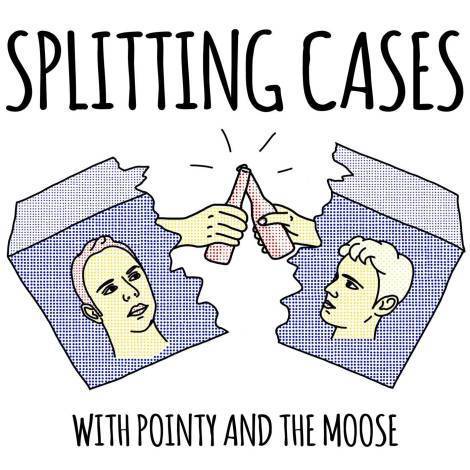 It has been a hectic few months in Milligan camp, but it has not been without frivolity. I have been writing a second novel, retiring from my post as Newcastle’s Music and Movie Trivia host and cooking up a new podcast. I’ve also been chipping away at a collection of short stories and continuing the promotion of Enormity. To quote Commodus, I have been a “busy little bee”.
It has been a hectic few months in Milligan camp, but it has not been without frivolity. I have been writing a second novel, retiring from my post as Newcastle’s Music and Movie Trivia host and cooking up a new podcast. I’ve also been chipping away at a collection of short stories and continuing the promotion of Enormity. To quote Commodus, I have been a “busy little bee”.
I have been developing a podcast with two friends, Joe Duffy and Mitch Power. We’re still working out the exact details and how frequently we will release episodes, but essentially the series will look at unusual stories from the media – articles worthy of dissection and discussion in a silly and immature manner. The show is called Dictating Terms and will hopefully be available through iTunes as a free download. We have set up a Facebook, but it is in its very early stages. You can like it here.
Coincidentally, I was recently invited by two Music and Movie Trivia regulars to be the guest on their own very-cool music and movie related podcast Splitting Cases. Essentially the premise is that they have a guest on the show who talks about an artist or movie that is dear to them, and the presents and guest(s) drink their way through a case of beer. That was certainly the “case” when I joined hosts Pointy and the Moose to pay homage to the late-great Doc Neeson and Jim Keays, and to discuss Australian rock music.
Download it here: https://itunes.apple.com/au/podcast/episode-14-australian-rock/id844102219
The podcast was recorded over a boozy afternoon, across about six hours. As inebriation inclined, we get a little slurry – as one might expect. But the passion is there, that’s for sure. To prove that the case was absolutely split, please see the below photographic evidence:
Stay tuned for more information about Dictating Terms. I will post a blog about the recording of the first episode.
And keep your eye out this Friday for the second half of the Aussie rock edition of Splitting Cases, featuring Pointy, the Moose and yours truly.
x


May 15, 2014
Enormity: fan questions answered
The following blog does reveal hidden aspects of Enormity .
I put out the call recently to fans of Enormity to send me some book-related questions that they might like answered. I would like to keep a dialogue open between myself and readers, in case there are any aspects of Enormity that they are pondering about. I will try to answer everything, unless it is something I politely choose not to answer. Smiley face.
How did you write the structure of Enormity, because the chapters jump around out of sequence. Did you write them in order and then shuffle them around?
No forward planning went into the way the chapters are arranged, so it’s a relief that they came together and are easy to follow. I plotted as I went, so I just followed my instincts. I wish there was a more impressive answer that involved giant mind maps and mental blueprints. What I did have from the outset, and early after I had started writing, was a sense of lots of different “scenes” or “scenarios” that I wanted to include in the book. I wanted Jack and Big Bang Theory to headline a music festival, I wanted to write his crash landing, I wanted a song-by-song depiction of one of their stadium-sized concerts, I wanted an interview with a music journalist, a photo shoot in a hotel room, an awards ceremony etc. I also knew Jack was an alien, so I thought a reference to Area 51 might be interesting. So I went about writing these scenes as self-contained stories. I see each chapter as being a short story. This made it easier to move them around because very few of them step directly into the following chapter.
I’m really happy with the way the chapters all came together. Ultimately, Jack is in total control of what is said and revealed. It is his decision to move about in time. While he does not admit everything right away, I believe Jack wants the reader to understand and forgive his actions.
What is going on with those “Guardians” and the weird creatures that keep appearing?
Natalie explains them, to a certain extent, towards the end of Enormity. I wanted the book to have a mythology that simmered beneath the surface. Natalie actually gives away more details then I ever intended. But she does what she wants.
I suppose the interesting story behind the idea to have a recurring presence in the book – a shape-shifting observer – came from my subconscious. One night I had a very intense nightmare in which I was being chased and chased by this long, sleek cat-like creature with human eyes. No matter where I ran, it was always just behind me. Chase dreams/nightmares are not uncommon. I have them constantly. But I usually forget the contents of any dream or nightmare the second I wake up. But the image of this weird animal stayed with me during the day. I was already writing Enormity so it seemed like a nice, organic piece of imagery to include.
Jack seems to be able to communicate with animals and other creepy crawlies. Is Enormity really an adaptation of Dr. Doolittle?
Yes, but with far less sodomy.
Chapter Three is pretty long and intense, and perhaps contains the most “infamous” scene in the book. How did you write that chapter?
I assure you I was fully clothed when I wrote it. That whole chapter is stream of consciousness. Natalie came to life and dictated terms. Both Jack and I were really at her mercy. If I had to analyse the origins of the nightclub, Membrané, and what transpires within it, I believe I was drawing on my memories of Gaspar Noé’s film Irreversible. I was blown away by that movie. I don’t think male sexuality has ever been more uncompromisingly depicted in cinema. There’s a scene towards the beginning (or end, depending how you look at it) where the two male protagonists enter a gay bar called Rectum. They descend deeper and deeper into the venue. The camera rolls and rolls on an axis behind them, disorientating the viewer and allowing only brief glimpses of the extreme sex going on around them. I think I pictured Chapter Three to be a similar journey.
Are you going to write a sequel?
I never intended to write one but every reader has asked. I will, but I need the idea to be organic and not forced. The second novel I’m working on does take place in the same universe as Enormity but will actually be set on Earth. The events of the book will happen in parallel to the events in Enormity. I can’t say much more than that. It’s early days and the story may change. I’m also working on a collection of short stories. Some will be new and some will be ones I’ve dusted off. This collection, at this stage, will be called The Peeping Toms.
Could you please put a list of all the songs featured in Enormity up online? Will you ever release a soundtrack of the book?
I would love to put up a complete list – it will just take some time! There are lots of classic songs that Jack sings with an acoustic guitar, or merely references, throughout the book. Lots of classic rock songs are played by Big Bang Theory. Here is a Spotify playlist of some of the ballads that both appear in Enormity and have also had an impact on my life.


April 21, 2014
Under The Skin: Film Review
UNDER THE SKIN
4/5
An alien with a detached stare and the stunning looks of Scarlett Johansson drives a white van through the cold, austere streets of Scotland. The creature is hunting prey, choosing male pedestrians from the cabin of her vehicle before politely luring them into her passenger seat. The beautiful alien takes them to a small abandoned house. The men are expecting sex, but are instead drawn into a black pool of liquid and digested.
We do not know any more about our protagonist, except that she is from another planet and is here to murder. She is aided by another alien in disguise, a man who rides a motorcycle.
This is the opening act of British director Jonathan Glazer’s third film, Under The Skin, and it is unsettling and simplistic as it sounds. From here we follow the inquisitive transformation of the stunning creature as she is immersed in both the compassion and evils or Earth.
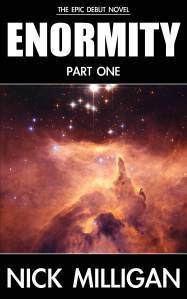
Find out why everyone is talking about Enormity
This is daring filmmaking. With a courageous and bold performance by Johansson at its centre, Under The Skin is haunting, ambitious and arresting. And, despite its premise, the screenplay by Glazer and Walter Campbell avoids violence until the very final moments. We are presented with visual metaphors and interludes of challenging images, some of which echo the slow-motion beauty of 2001: A Space Odyssey.
Adding to the serene unease is Glazer’s shifting visual approach, which keeps the viewer off kilter. The gritty documentary-style of the scenes in Scotland’s suburbs, which are largely unscripted and feature mostly non-actors, are juxtaposed with the highly stylised moments in which the men meet their grisly fate.
The screenplay strips most of the background detail from its source material, the 2000 novel of the same name by Michel Faber, leaving only the very basic premise. This is because the movie is an exercise in impressionistic cinema, exploring what makes us human. Under The Skin examines how our appearance informs our life experience. In this case, the alien’s chosen beauty is a double-edged sword and Johansson’s creepy, child-like portrayal is wholly believable and layered.
Glazer’s debut movie, 2000′s Sexy Beast, was a sparkling black comedy gem, but 2004′s Birth polarised its audience. Despite its flaws, the latter generated conversation and demanded attention. The same can be said of his third movie. Glazer’s unconventional approach to Under The Skin will distance viewers who embrace recognisable story-telling, but also make the movie less forgettable for audience members who like to absorb and defragment the images they are presented with. For this reason alone, Under The Skin is a chilling entry into the science fiction genre that deserves to be watched and remembered for many years to come.


April 16, 2014
First impressions of New York
New York, it is nice to finally make your acquaintance. I have heard so much about you.
I’ve been in New York for nine days now. This is my first trip overseas, I’m embarrassed to say, but I’m glad I chose the Big Apple as my first non-Australian holiday. The first week was spent doing the essential sight-seeing and now we are looking for experiences off the beaten path. We’ve been based in Manhattan, at The New Yorker Hotel next to Penn Station, and it has been a perfectly central location from which to venture each day.
Here are my observations about New York – its differences from Australia. Some of these observations might sound a little critical, but I do want to stress that the pros of NYC far outweigh the cons. To quote Usher, “these are my impressions”:
There are lots of hustlers. Australia has its fair share of homeless and citizens just above the poverty line and, generally, they simply ask for spare change. But the poor in NYC have to be creative and clearly target people they perceive as tourists. We’ve had a number of people try to hustle money out of us since we arrived. I’m generally a trusting person, but in NYC it is best to assume you’re being hustled. One example, I was arriving at the Met and a young African American guy came up to me and said, “Hey man, where are you from?” When I told him I was from Australia he showered me with compliments about both my country and the attractiveness of my girlfriend. He then told me that he was an independent musician and was trying to get the word out about his debut record. From a bag he pulled a CD with no markings on it, which was placed inside a plastic slip that also had no markings on it. It essentially looked like a blank disc. He then asked me what my name was and signed the exterior of the plastic slip with a blue whiteboard marker. He explained that the record was a mix of “rock, pop, classical and jazz” and as someone who has spent the past 12 years assisting independent musicians, I felt compelled to listen to his music and promote it if I could. Then after I smiled and took the CD from him, he said, “Now I need a donation – most people pay $20.” I must admit, a small alarm bell went off in my mind. The disc, as far as I could tell, was potentially a blank CD. His autograph was not discernible as English. When I paused at paying him $20 he started bartering downward, clearly used to people walking away before he got so much as a sweet penny. “$10, $5… c’mon, man, $5.” It was a great scam, because there was no markings on the CD that could be traced back to him. I pulled four $1 bills from my wallet and gave them to him. The disc, despite almost certainly being blank, was a piece of bonafide NYC hustler memorabilia.
A few days earlier, we were at an ATM in the foyer of a Duane Reade (which is a chain of chemists that also sells candy and alcohol). As soon as we turned away from the cash machine, a white guy ran into the store with a look of desperation in his watery eyes. “What is wrong with this poor man,” I thought. Choking back tears, he said, “Somebody, please help me!” I thought someone might have stabbed him or kidnapped his firstborn child. He held up a small wad of money and a pink scribbled document and said, “They just impounded my car and it’s going to cost $700 to get it back! Please, I have nearly all the money, I just need $12.50! I’m $12.50 short!” He was very convincing. He offered to let us see the document which, to an Aussie tourist, could have been written in French and been just as convincing. My partner Amanda was wary and said no. As we left the foyer, he started the spiel on another person entering the store. Good luck to him.
Toilets are shallow. I wasn’t expecting this, but the stand American toilet – based on what I’ve observed in NYC – is unusually shallow. And I don’t mean that the toilets lack emotional depth. But Australia’s toilets have a reasonable physical bowl depth, but the toilets here are about 2cm from rim to water. I’m not sure why this is. In 30 years of Australian toilet visits, my hand has never accidentally grazed the water’s surface. Here it seems to come with the territory.
Toilet cubicle doors have large gaps on either side. Sorry to harp on about toilets, but they were the first unusual thing I observed after landing on US soil. Public toilet cubicle doors haven’t been fitted neatly. The gap on either side of the door seems consistent across most of the toilets I’ve visited – again, it’s not necessary. In Australia, in 94% of cases, when the cubicle door is closed you have privacy, unless someone sticks a sneaky mirror under the cubicle wall. This is not so in NYC. What can we deduce from this? A nation of peeping toms? Or a functioning honour system?
Beer is not purchased in small quantities. I thought we had a big drinking culture in Australia, but it is very hard in NYC to go for a casual beer. Every bar we’ve been to, and we’ve been to many, serves draught beer in two sizes – pints and pitchers. No schooners or midis to be seen. They like putting beer in jumbo cans here, many of them the size of my head. There are also hundreds of beers to try. Every bar has a totally different selection from the previous establishment. So for beer appreciators, there are oceans of tastings on offer. It is also very cheap.
Everything has a Starbucks. The coffee chain, famously owned by Dr Evil, never really exploded in Australia. I think this is because quality coffee was already so widely available. But most people here drink black brewed coffee and it is very cheap (about $2 for bottomless refills). Australians like to pay for quality coffee by talented baristas. Here folks seem to grab it on the go and drink the stuff like water. This has given rise to millions of Starbucks outlets. Everywhere you look there is a Starbucks outlet. In Midtown there is a Starbucks on every block. There’s one in Trump Tower, there’s one in Macy’s, there’s even a Starbucks counter in our hotel room. There’s even a Starbucks in every restroom – when you’re having a sit down, you can sing out a coffee order and they’ll just pass it to you through one of the yawing gaps down either side of the cubicle door.
Burgers, hot dogs and pizza are superior to Australia. New Yorkers get these food stuffs right. No question. I’m going to attempt some food reviews on this website, so stay tuned.
It’s fuckin’ freezing. Seriously, New York. WTF. The conditions here are Arctic. My lips are chaffed. I’ve got this cold that has me coughing up a new shade of yellow. But the city of New York and its people can’t be blamed for global warming. Nobody wants to live in the heart of a polar vortex. But I know one thing – I won’t complain in 35 degrees Celcius weather again.
Revolving doors. NYC loves a revolving door. They look kind of cool, but the trajectory of their novelty value is brief. Every single building has one. They’re very inefficient in speeding human traffic flow. They’re pointless and indulgent.
Tax. We have tax in Australia too, but we include it the prices we advertise. That makes purchases less confusing. Every time you buy something you have to do a little mathematics in your head. If you’re tourist you don’t even know what the mathematics are to find out the exact price. Very odd.
It’s hard to find healthy food. It might be a little different outside of Manhattan, which is mainly where I’ve been eating, but it’s difficult to find healthy eats. Most food is deep fried or very, very oily. The one supermarket we stumbled across was almost too crowded to shop in. The American Museum of Natural History doesn’t even sell bottles of still water. It has some great dinosaurs though. And even better dinosaur chicken nuggets.
